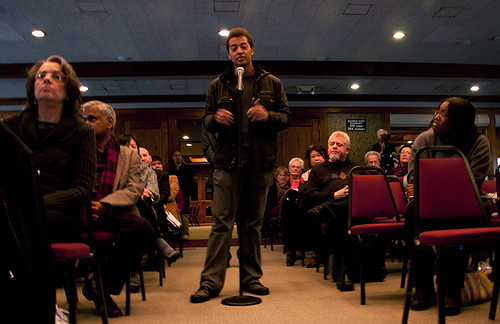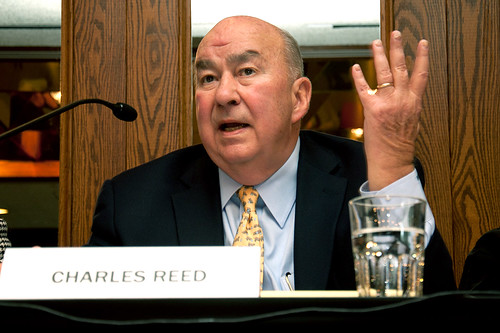
The first and only public meeting to discuss the selection of the next president of SF State took place today at 10 a.m. at the Seven Hills Conference Center.
About 70 people–roughly 10 of which were students–attended the meeting, where the campus’s advisory committee outlined the presidential selection process and invited public comment on what members of the campus community are looking for in the next president.
This was the only opportunity for students and faculty not serving on the advisory committee to voice their concerns on the selection process directly to committee members.
Andrew Gutierrez, president Associated Students Inc., was concerned that the event was not publicized well beforehand.
The University sent out a campus memo in the form of an internal newsletter to faculty and staff members, but not to students directly.
“Students don’t get campus memos,” Gutierrez said. “(A committee member) was concerned about student demonstrations at the meeting. That could risk steering candidates away from a public visit to the campus and we don’t want that, since the visit is optional now.”
When asked about the low turnout and the issue of publicizing the meeting, California State University Chancellor Charles B. Reed said, “it is the campus’s responsibility to get the information out to the campus community.”
SF State officials disagree. Nan Broadbent, an SF State spokeswoman, noted that publicizing the event was the responsibility of the CSU.
“More importantly, this event was entirely the chancellor’s office, it was not us,” Broadbent said. “We did everything we could to notify the entire campus community. Everyone was invited.”
Broadbent noted that SF State created a post on the University website to call attention to the event and used social media to disseminate the information.
Of the few students who attended, most were affiliated with Occupy SFSU, and spoke their opinions without protest.
Lalo Gonzalez, 23, criminal justice major, was among those that felt that the meeting was severely under-publicized.
“It was so secretive. (I’m) not sure if it was a strategy by the University to keep activists out,” Gonzalez said. “There were no students there; it was ridiculous. If the meeting was so open like they said, then why didn’t they make a greater effort to let the rest of the students know?”
Reed explained that students who did not have the opportunity to voice their opinions may speak with Gutierrez, who can then share them with the full advisory committee.
Gutierrez is the only student sitting on the advisory board of 16, and is currently working on creating a public forum for students to discuss their expectations for the next president. He requests that students with concerns email him directly.
“It would have been a great opportunity for student voices to be heard but we kind of missed out,” Gonzalez said. “I think they did make an attempt to hear everyone’s voice, but it just goes in one ear and out the other.”
Many of the speakers who addressed the committee called for a more transparent selection process. Reed explained that the process is made confidential to protect the candidates’ anonymity. Reed stated that during the search process for a new president at San Diego State University, many candidates withdrew their applications, allegedly because the application process was public.
Some students expressed dissatisfaction with this policy.
“If the candidate for president is not proud to say that they are a candidate here at SF State… then I don’t want them here as my president,” said Terence Yancey, a philosophy major at SF State.
Chair of the advisory committee and CSU Trustee Roberta Achtenberg has sat on 17 presidential search committees and emphasized that, while she knows some may be skeptical about the selection process, she believes it is “tried and true” and has never failed to find a successful candidate.
“Finding a worthy successor is going to be a challenge,” Achtenberg said. “The president will be selected after enormous deliberation in a confidential process that will be taken extremely seriously… It will yield what it always does, which is an excellent president, which is what this University deserves.”
Andrew Cardoza, an art major at SF State, expressed his desire for a president who will be visible and active in seeking input from the campus community.
“The thing is you don’t trust the person on the other side of the fence,” Cardoza said. “We need more conversation, a person who is willing to take the time to engage with people, and when they make cuts to programs takes the time to students and faculty.”
The committee will reconvene in March after soliciting candidates from other colleges and through ads placed in academic journals. Reed expects to have somewhere between 50 and 60 candidates, which will then be narrowed down to six or seven.
At that time, the interview process will begin and the committee will submit three or four final recommendations that the Board of Trustees will interview and make the final selection from. The committee hopes to have a final decision on the next president by mid-May.




